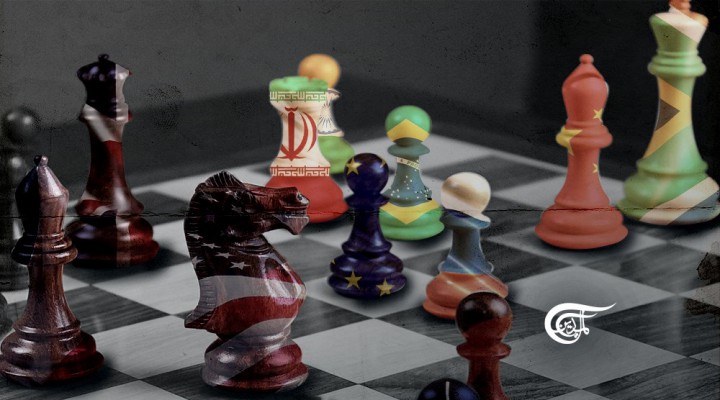Two architectural rivals slug it out

The post-24 February world truly is different. The inexorable geopolitical logic today is that of America’s attention turning elsewhere, and the world sees a weaker US.
No one seems sure quite why Biden is making this trip to the Middle East. It is a mystery. For sure, it’s not for plaudits at home: Jamal Khashoggi and Shireen Abu Akleh’s shrouds swirl mistily around the US delegation, giving it the jitters. Biden is being roasted even in the most supportive US journals for the risk to the safety of journalists implicit in any reconciliation with MbS.
Biden comes not for the Palestinians. Rather, he comes bearing a small gift for “Israel” – which is that he will ignore the Palestinians, as best he can. Nor is it to inaugurate an Arab NATO (Gulf states want to retain ties to Iran). And it’s not even for the oil: The UAE will not give him even a single extra barrel, and the Saudis, maybe just an additional 100,000 or 150,000 barrel per day (and even that will be set against OPEC+ states that have undersupplied to quota).
A neurologist once told me that our brains are like a virgin wood. Initially, grass and flowers are everywhere beneath the trees. And then a deer wanders through and passes on. Another follows on, and another, and all follow the track laid by the first deer. It becomes a deeply trodden path. Diplomacy is like that.
Two decades ago, a Clean Break strategy was produced that said the US must be friends with – and support – the region’s monarchs against the secular socialist Arab States to make “Israel” safe. And US Presidents all have hued to that same track through the wood. Nothing changes — just a new name is found for a ‘new’ Arab alliance against Iran.
And so Biden is doing the walk in the wood. But this time it’s more about ‘occupying space’ in the region: Jollying along the monarchs to make sure that this ‘American space’ is denied to Russia.
There is today in Washington this worry that the Russian sphere looks too enticing. And there is cause to worry (even Josep Borrell admits it): The West, at the G20 Foreign Ministers summit in Bali, utterly failed to force the BRICS plus major Global South players to isolate and sanction Russia over Ukraine. They are still trying: India and Saudi are in their sights now. However, the Chinese G20 readout highlighted that Jaishankar had conveyed to Wang Yi that “India will continue upholding strategic autonomy and an independent position on international affairs”. India also has told the US that it will not participate in any project to try to cap the price of Russian oil.
The Americans are peddling their regional security architecture (based on polarisation around Iran). But Russia has an alternative.
The SCO-BRICS architecture is different from that of the Americans. It envisages an architecture that is not directed by outside powers, but one in which its participants have ownership. Russia and China are insistent on this point. And it is intended to be inclusive.
The post-24 February world truly is different. The inexorable geopolitical logic today is that of America’s attention turning elsewhere (to China). And the world sees a weakening America.
This month’s Harpers title is astonishing: Harpers Declares ‘It’s Over’ – The ‘American Century’ Is Gone. What’s more, it says it, absent the de rigueur question mark. It stood out a mile even before Harpers came out with this title: Compare the childish antics of the G7 to the workmanlike conduct evidenced at the BRICS Summit.
Against this background, everyone is weighing the course of history. If war is to be avoided, some security architecture is necessary. And the Russian initiative is appealing precisely because it includes Iran. Iran is a member of the SCO and an applicant to BRICS. Saudi Arabia, Bahrain and Qatar are applicants to the SCO too, and Saudi Arabia has been invited to join the BRICS. Egypt and Syria have applied for SCO observer status and Turkey is a dialogue partner. So it already enjoys the basis of architecture.
And, if we add that the SCO already possesses a security dimension and a powerful economic dimension in the Eurasian Economic Community that links to the Belt and Road Initiative, the northern architecture becomes compelling.
This week Iran announced the completion of the first shipment of cargo departing from St Petersburg via the North-South Transport Corridor. It passed through the Caspian Sea port of Anzali and the Iranian port of Bandar Abbas to Bombay.
This new route, which is planned to be upgraded to High Speed within one year, both cuts transport times – and costs – dramatically. India has just made the rupee a trade currency, and Iran has signed an interbank clearing agreement with Russia. We predict that it will be the Gulf that pivots — pivots in trade to India and Asia.
Events are moving with dispatch. Is it then any wonder that Team Biden is back to try to shore up relations? Will Team Biden’s outcome in the region be so different from the outcome at the G20 that so dis-spirited Josep Borrell?
https://english.almayadeen.net/articles/analysis/two-architectural-rivals-slug-it-out
 TheAltWorld
TheAltWorld 
0 thoughts on “Two architectural rivals slug it out”